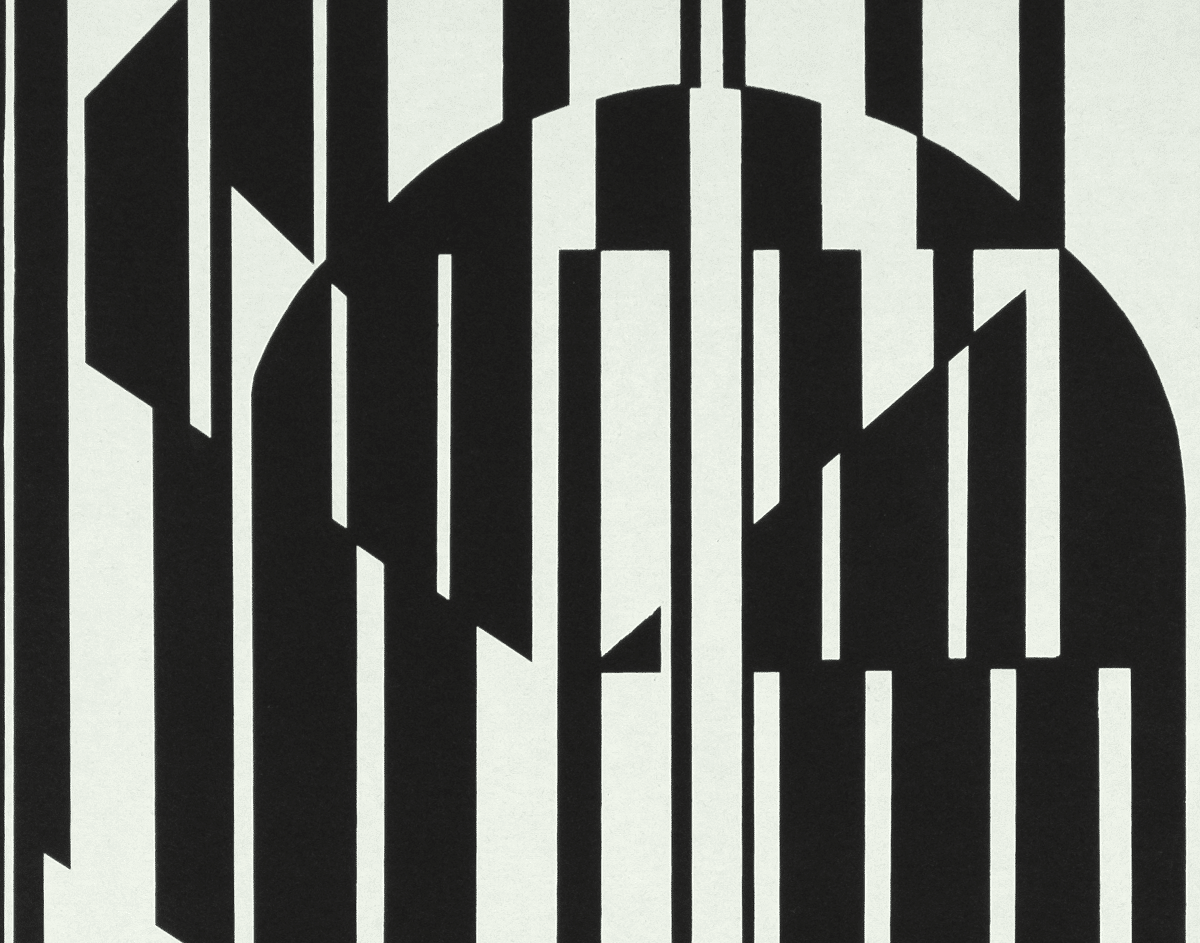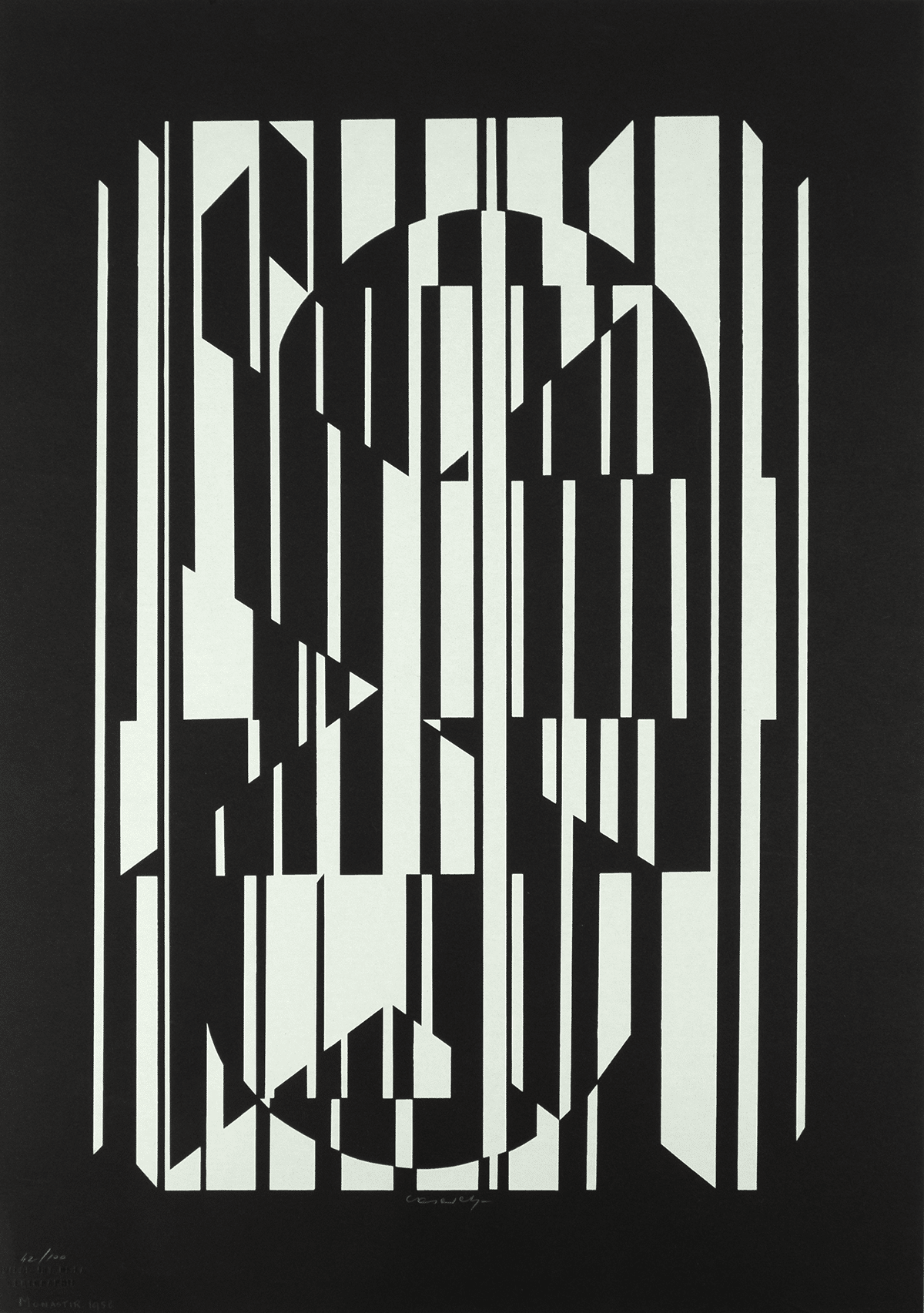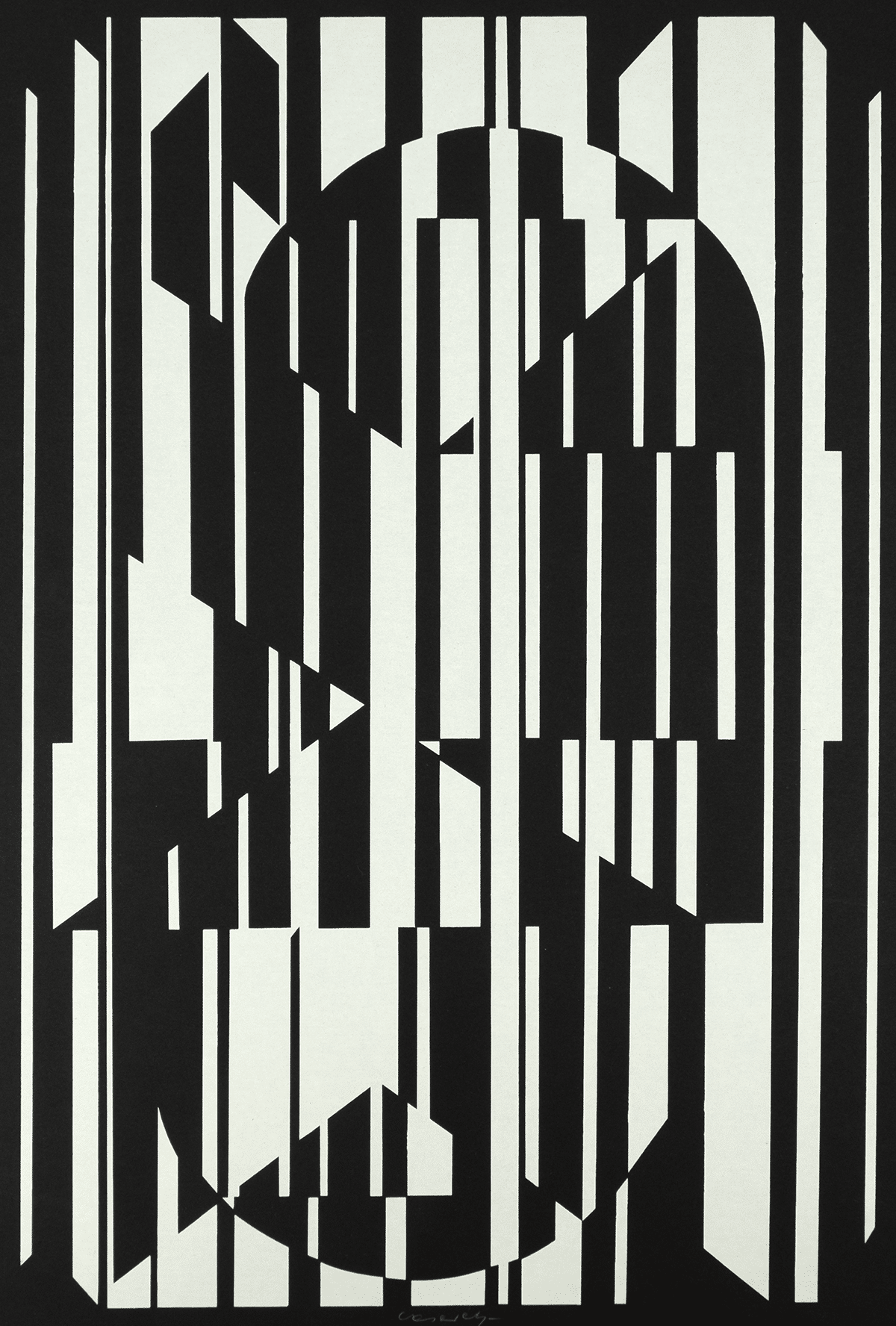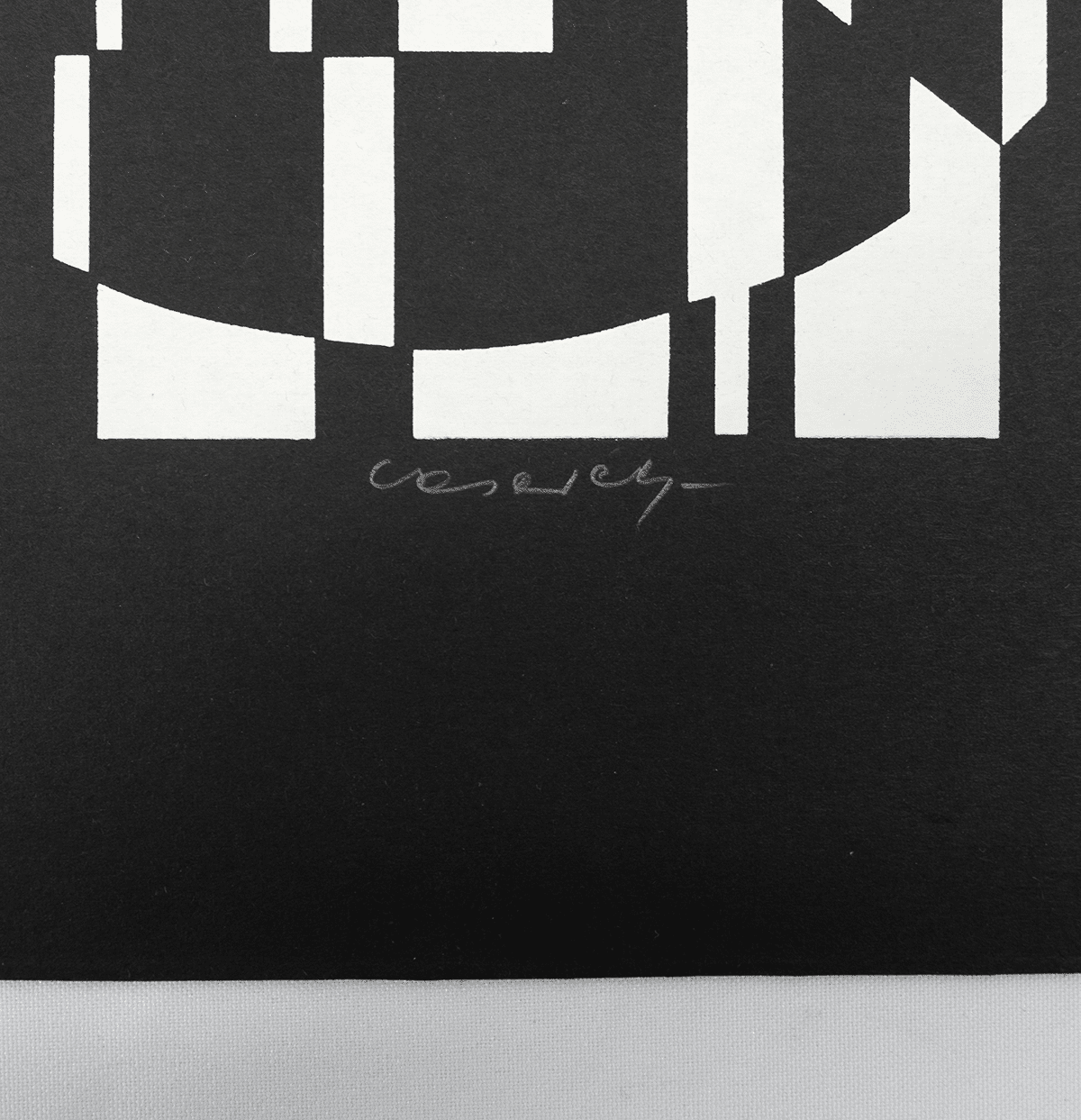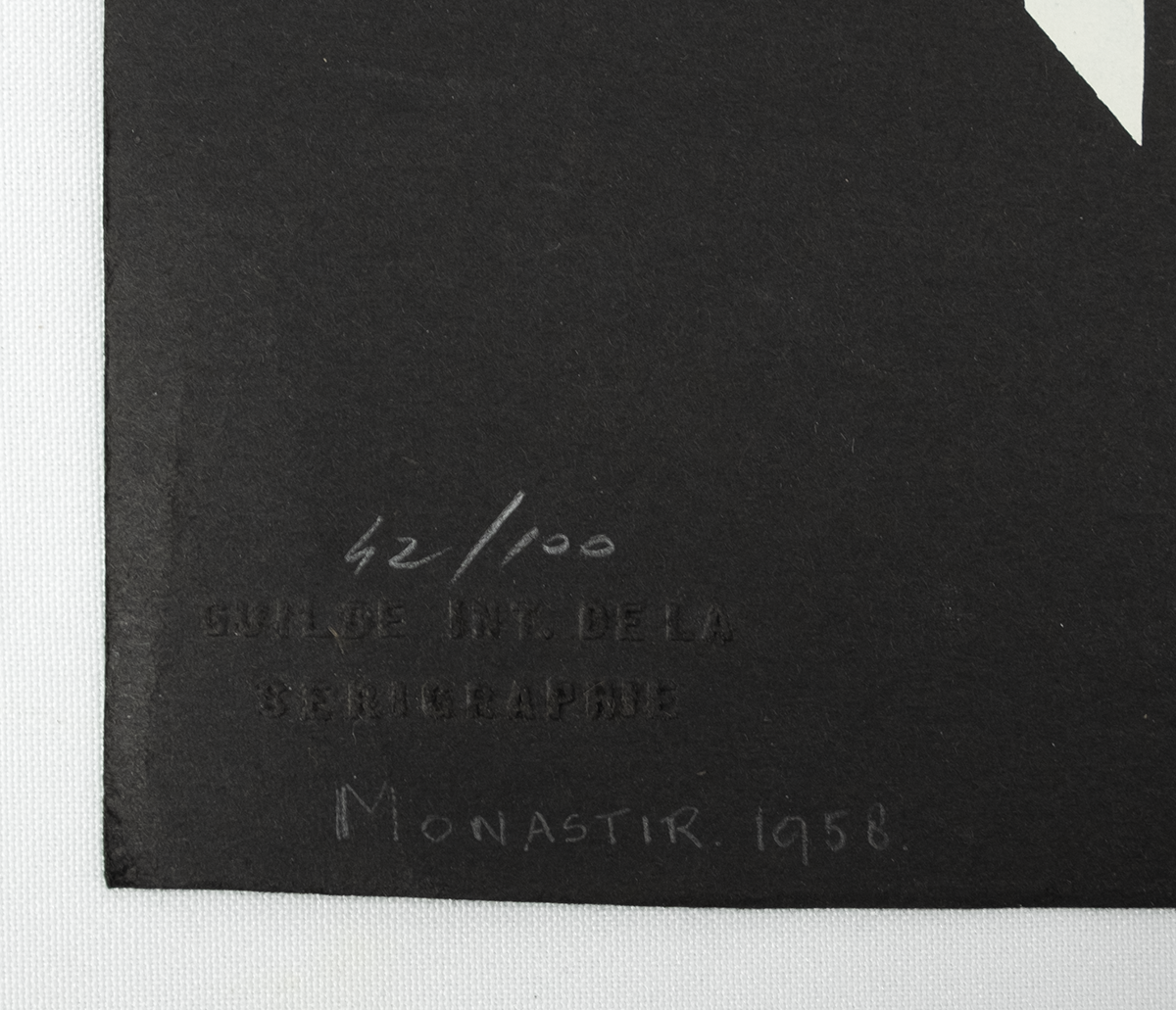Victor Vasarely (1906-1997) - Monastir
Screenprint on paper, signed center bottom of Vasarely and numbered lower left 42/100. 1958. Published by Guilde Internationale de la Serigraphie, Basel (blindstamped). Minor signs of use at edges in places, very faint crease in lower left corner, in very good condition. Measures approx 50*70 cm.
Back to offer overview
Screenprint on paper, signed center bottom of Vasarely and numbered lower left 42/100. 1958. Published by Guilde Internationale de la Serigraphie, Basel (blindstamped). Minor signs of use at edges in places, very faint crease in lower left corner, in very good condition. Measures approx 50*70 cm.
Back to offer overview

